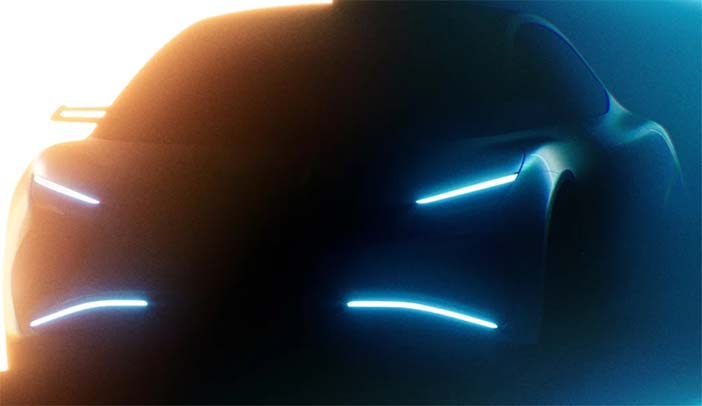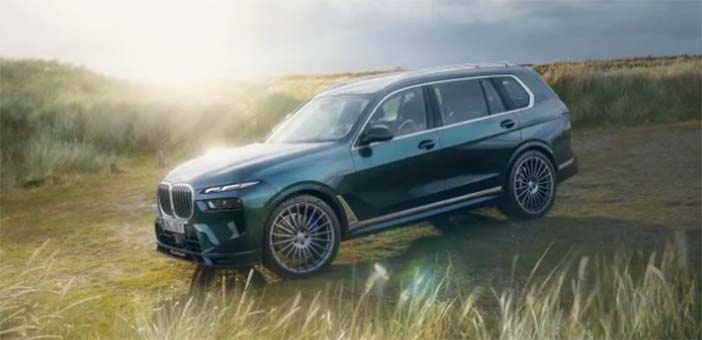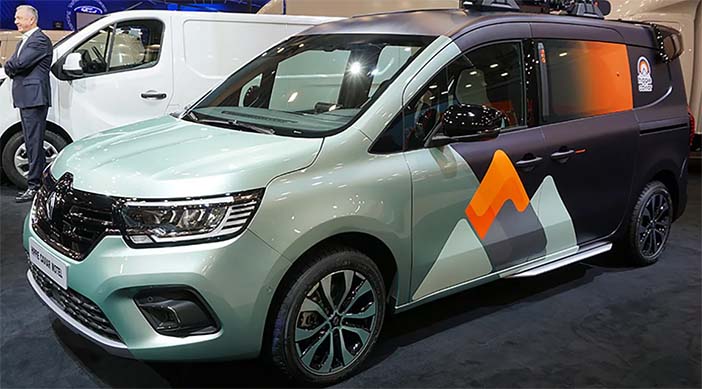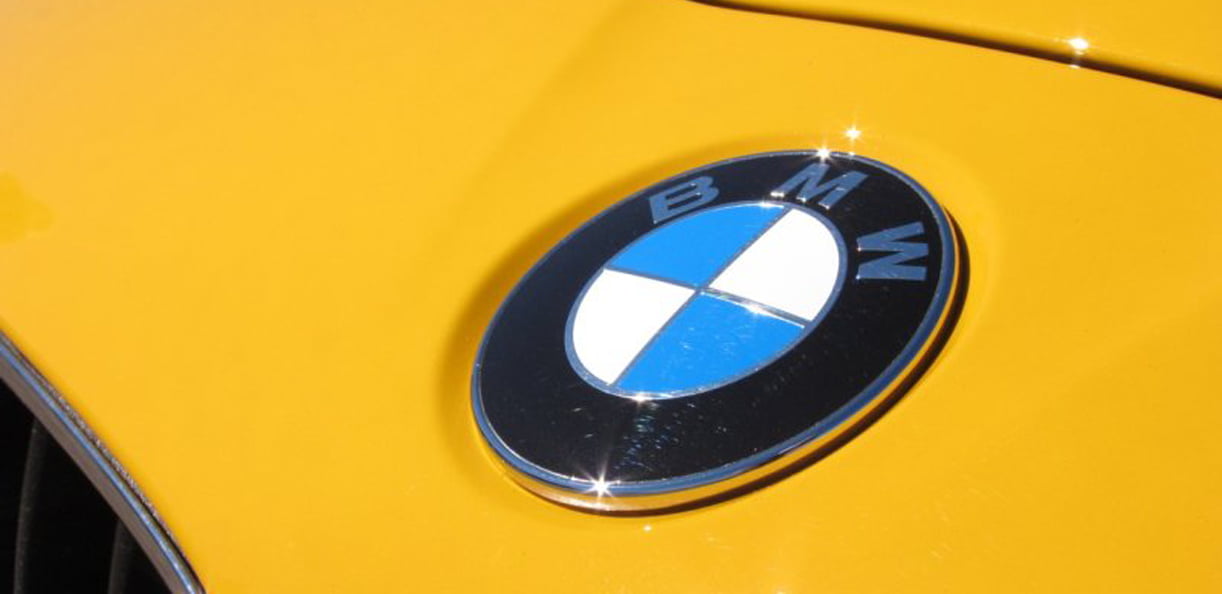+++ This is the first look at a car from the new brand AEHRA . It’s an all-electric SUV aiming to take on the luxury car segment. Based in Milan, Aehra says it blends “Italian design, world-class engineering and US customer service”. The EV brand plans on bringing the SUV and an all-electric saloon to market in 2025 and these new images show us the kind of design we can expect from the fledgling brand. The saloon will be revealed in February next year and beyond that a third model, a 2+2 sports car, will be shown, although a reveal date has not yet been outlined. For an SUV, the Aehra looks remarkably sleek in its proportions. There’s also not a lot of hard edges to the design, although the quad headlight signature at the front looks fairly aggressive. At the rear there’s another quad light arrangement with the lights stopping just short of becoming a full-width LED bar. Perhaps the biggest design shock is the use of gullwing doors at both the front and the rear. We’ve seen 4-door cars incorporate this before with the Tesla Model X’s rear gullwing design and the Koenigsegg Gemera’s single design, but this could be the first time four individual gullwings have been utilised. “The unveiling of the preview images of the first Aehra model, just 4 months after the launch of the company, certifies that we remain firmly on track”, said co-founder, chairman and chief executive officer, Hazim Nada. “We now look forward to revealing the full design and name of the vehicle in October”. The firm claims its SUV will feature “leading-edge battery platform technology, targeting a range of at least 800km (497 miles) and awe-inspiring performance”. It should also be able to accommodate “4 full-size NBA players, while leaving room for a 6-foot adult in the middle of the rear seat row”. There will be one platform underpinning both the SUV and saloon and we can expect a battery capacity of 120 kWh in both. This means the saloon should offer a similar if not greater range than the SUV model. The 2 will utilize a lightweight carbon-fibre monocoque chassis to help reduce vehicle weight and enhance range. Aehra says both will offer “exceptional agility and driving pleasure”. Charging should be up with the fastest in the EV world with plans for market-leading 850 Volt architecture. In an interview, Nada said, “Europe will be an important market for us. We’re going to start with the North American market and Europe. The second stage will be dedicated to the Gulf countries and China”. Aehra isn’t looking too closely at potential rivals however. “We have a price bracket in mind, so we’re targeting high premium, $160,000 to $180,000, so at that price you obviously have the Porsche Taycan, Lucid Air, Mercedes EQS, but we’re not similar to those products, we’re quite transversal in terms of which markets we want to reach. We don’t have a specific benchmark”. Nada thinks Aehra will have a head-start on the competition, especially on traditional internal combustion engine car makers. “Aehra’s vehicle architecture takes the step by addressing the direct shortcomings of designing electric vehicles that maintain the shapes of internal combustion engine traditions”. +++

+++ When BMW introduced the updated X7, we knew that the 2023 ALPINA XB7 wouldn’t be far behind. We caught a glimpse of the big SUV earlier in 2022, and the German company has finally released more photos and a full set of details about its updated flagship model. Visually, the XB7 stands out from the X7 with an Alpina-specific body kit that includes a front splitter, side skirts and a new-look rear bumper that gains 4 oval exhaust tips. 23 inch wheels with 20 spokes (a classic Alpina design) come standard, but 21 inch units are available as a no-cost option. Inside, Alpina differentiates the XB7 from the X7 with blue accents in the instrument cluster and on the center console, a specific steering wheel, and illuminated door sills, among other features. Wood interior trim comes standard; carbon fiber trim is optional. Power comes from a new twin-turbocharged, 4.4-liter V8 that works with a mild-hybrid system to develop 630 horsepower (18 more than the pre-facelift model and 107 more than the X7) and 800 Nm of torque. Alpina quotes a 0-to-100 kph time of 3.9 seconds, which is impressive for a mammoth 7-seater SUV, and a top speed of 290 kph. The 8-cylinder spins all 4 wheels via an 8-speed automatic transmission linked to a pair of steering wheel-mounted shift buttons. Alpina made several significant changes to the drivetrain before deeming it worthy of powering the XB7. It notably designed its own engine management system and developed a heavy-duty cooling system that includes a main engine cooler with integrated engine oil, coolant, and transmission fluid coolers. There’s an Alpina-specific intercooling system and cross-sectioned coolant hoses as well. 4-piston front brake calipers gripping 15.5 inch rotors keep the cavalry in check. The XB7 is also fitted with an air suspension system that lets the driver pump up the ride height by 1.6 inches at up to 30 kph to clear obstacles such as steep ramps. The suspension lowers itself by 0.8 inches when the driver selects Sport mode or goes over 160 kph, and it drops by a total of 1.6 inches in Sport+ or above 250 kph. Deliveries will begin in early 2023. +++

+++ A second BUGATTImodel with a focus on practical, everyday use appears to have been shelved. The car was first mooted by former Bugatti chairman Stephan Winkelmann, before the firm became part of Bugatti Rimac last year. The model was expected to take the form of an SUV or 4-door GT and be one of the manufacturer’s first electrically powered offerings. It was also tipped to share components with other brands under the umbrella of the Volkswagen Group, the marque’s former owner. At the time, Winkelmann said the proposed model would be “a car to be used on a daily basis” and have “a different shape” to the then-flagship Chiron as well as a “different mission”, adding that the car wouldn’t house Bugatti’s famous W16 engine and instead “electrification would be the right approach”. Now, however, design director Achim Anscheidt has revealed that the brand is concerned that such a move could sell out its badge and make Bugatti a less exclusive manufacturer than it currently is. “We always had an idea of what a second model line could be”, said Anscheidt. “But then we were also thinking at one point, are you starting to sell out the brand? What do you do with this precious logo? Will a step like this be too brutal, by selling that logo for some numbers? If one does bring out an everyday/second model, I’m always a big fan of balancing this, not to forget the roots of the company or to [create] something more exclusive. This means that if you go into slightly more volumes, you should go more exclusive on the other side, so this remains the core product and it balances this”. Exclusivity is something that Bugatti treasures. The brand has confirmed that the recently announced Mistral roadster (just 99 examples will be made); the last car to be powered by the W16 engine before the firm moves on to creating its first hybrid hypercar. +++
+++ HYUNDAI is working on a facelift for the third generation. There will be some significant changes to thecity car. The current i10 has been out since 2019 and while it received a light update in 2020, I expect this facelift will be more extensive. The city car segment has been under threat for a while with brands struggling to make money out of smaller, cheaper vehicles in general. The Hyundai i10’s roster of rivals has dwindled somewhat in recent years, with the Peugeot 108 and its Citroen C1 sibling dying out along with the Opel Karl, Renault Twingo and Skoda Citigo. Despite the issues in the wider sector, Hyundai is pressing ahead with the i10 and it’s set to receive a new exterior look. The front will get a reshaped bumper and new daylight running lights. The headlights and fog lights will also be tweaked compared to the current i10. At the rear we can expect a new design of lights, plus a new fog light position. There will also be a restyle of the bumpers too. Inside, the i10 shouldn’t change too much. Higher-spec models will still receive an 8inch infotainment touchscreen, a rear-view parking camera and smartphone connectivity. The sportier N-Line model should remain as the range-topper with unique 16-inch alloy wheels, a new grille and red stitching on the upholstery. The powertrain lineup is also unlikely to be messed around with. Under the bonnet, I expect to see a 67 hp 1.0-litre 3-cylinder and a 100 hp turbocharged 3-cylinder. The release isn’t likely until the latter stages of 2023. +++
+++ MITSUBISHI will only considering re-entering the British market when it has “more than one” electric car to offer, the brand’s head of Europe said. The Japanese car maker today unveiled the first of 2 cars based on models from its Alliance partner Renault that it will sell in its remaining mainland European markets. The second-generation Mitsubishi ASX is a rebadged version of the Renault Captur that will launch from March next year, while the company will also sell the Renault Clio-based Colt, starting in autumn. The ASX will be sold with a plug-in hybrid drivetrain to sit below the current Mitsubishi Eclipse Cross PHEV, but no electric car has been announced. Mitsubishi left the United Kingdom (UK) in 2020 as part of cost-saving strategy that initially involved leaving all of Europe. It reversed that decision and has streamlined its European presence to 17 markets down from 32 in 2019. However such has been the shift to EVs in the UK in the meantime, Mitsubishi doesn’t feel confident to re-enter with its planned line-up. “The market has changed quite rapidly in the past 2 years, so we would have to find a good product strategy to re-enter”, Frank Krol said. “We’d need more than one electric car”. Mitsubishi aims to grow its European sales back to near where it was in 2019, when it sold almost 150.000 cars in the region, Krol said. The ASX will be built by Renault in its Spain factory and be offered with the full Captur engine line-up, including the plug-in hybrid, hybrid, 1.3-litre mild hybrid and entry 1.0-litre turbo petrol engine. The design is very close to the Captur, but with Mitsubishi’s ‘Dynamic Shield’ grafted onto the grille. The new Colt, based on the Clio, will be built in Renault’s factory in Turkey. Mitsubishi will continue to offer the Spacestar budget hatchback below the Colt. +++
+++ As the mainstream motor industry transitions to fully-electric power, the campervan market is following suit. Meet the RENAULT Hippie Caviar Motel, a new Kangoo-based show car designed to preview what an environmentally friendly EV camper could look like, which has made its public debut at the IAA Transportation exhibition in Hannover. Renault has already revealed a Trafic-derived campervan concept under the Hippie Caviar Hotel (HCH) moniker, and this new version has been built from a Kangoo E-Tech Electric. Its platform is shared with the Mercedes Citan, and the Renault is fitted with a 45 kWh battery pack to provide 285 km of range. This figure is lower than the 300 km claimed range of the standard Kangoo E-Tech Electric, likely due to the added weight of the HCH’s interior furniture and roof rack. Still, an additional 170 km can be added in 30 minutes, with the HCH sending 122 hp to the front wheels. Inside, Renault claims that the camper offers “the comfort and amenities of a 5-star hotel”, and utilizes a host of sustainable materials in its cabin construction; the floor is made from cork and recycled tires, for example. Elsewhere, Renault has installed numerous storage areas designed to accommodate camping equipment and sports kit, and there’s a purpose-built ski rack integrated into the panoramic glass roof. Sleeping arrangements are catered for by a folding bench, which can be reconfigured into a single bed. No production plans have been detailed for Renault’s HCH models, but given that this is the second show car to wear the badge, the firm could be gauging public interest with this in mind. If it does reach showrooms, the HCH would join the Volkswagen ID.Buzz in the pure-electric campervan sector. +++

+++ The SKODA Superb is returning with a 4th-generation model in 2023. Thanks to additional spy shots of prototype cars, I expect Skoda will introduce a new approach to exterior and interior design for its flagship model. Underpinning the new Superb will be the tried and tested VW Group modular MQB architecture, albeit the updated MQB Evo version of the platform. It will be shared with the next Volkswagen Passat, with the 2 models to be built in Bratislava, Slovakia. The Superb will get a slight increase in length and wheelbase to help further distance it from the Octavia, which also grew for its 4th generation. The latest spyshots show a slightly revised octagonal grille in between thinner headlights. Beneath, there’s a new lower grille shape and isolated air takes at the side. The classic Skoda badge indent from the bonnet to the grille remains. At the side the larger dimensions become more obvious with a long rear overhang. A shoulder-line crease has also appeared and towards the rear we see a fairly simple bumper design, although expect to see a larger form of the C-shaped rear light unit from the new Fabia. Due to the MQB Evo platform, there will be no pure-electric Superb. Instead, we’ll see VW Group’s final generation of combustion engines, compatible with Euro 7 emissions rules likely to be introduced in 2025. While the popularity of diesel has waned, I expect to see it return on the new Superb with a variety of TDI options – ranging from 150 hp to 200 hp. Petrol power should be available in mild-hybrid and plug-in hybrid guises with the potential for it to borrow the more powerful Passat GTE’s powertrain. It’s anticipated that the updated MQB platform will accommodate a longer-range plug-in setup, with enough battery power to surpass 100 km of electric-only running. The Superb’s interior will feature a complete overhaul with a new approach to how users interact with the controls. This has been a controversial area within the VW Group, thanks to a mixed response for the interface within the latest Golf. Skoda may avoid some of these problems through better use of its infotainment screens. I previously spoke to former Skoda CEO Thomas Schäfer (now CEO of VW), who said that more fundamental revisions will arrive with the Superb. “The car’s interior is a huge step forward”, he told. “It will carry our new user language, which extends to what you touch and feel. Superb will get it first, and then the second-generation Kodiaq after. “We’ll see some elements from Enyaq iV, but we think we need to do more of the traditional controls, not only playing with the biggest display in the industry (a hint that the Superb could feature the Enyaq’s 13 inch screen) but also having elements that make sense for our brand. If there’s one brand that should be functional, clear and easy to use, it’s us”. This could mean multiple functions for single physical dials and switches. +++


